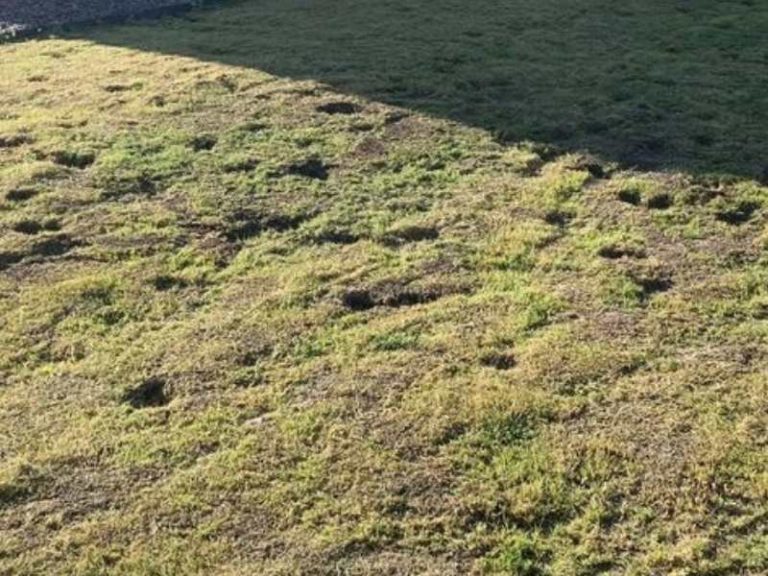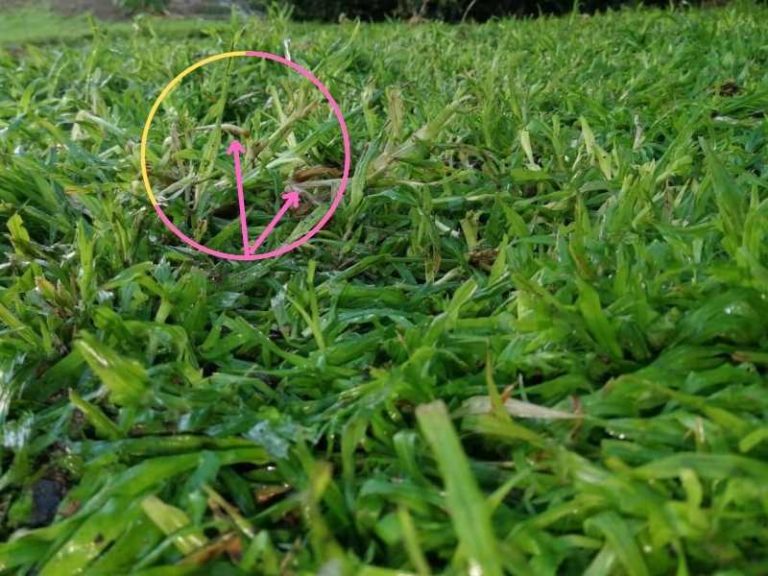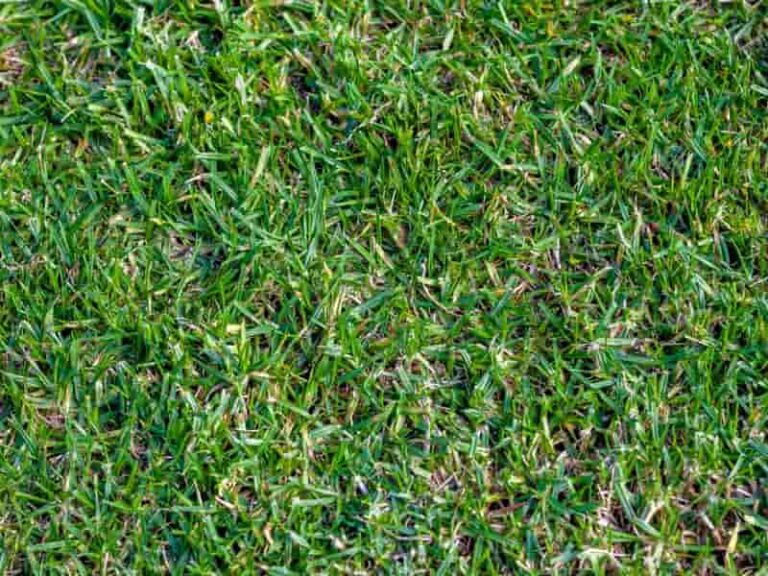Can You Grow Buffalo Grass in Arizona?
Saying Arizona is hot is a gross understatement. However, some grasses love the Arizona climate. Warm-season grasses such as buffalo grass, zoysia grass, centipede grass, and bermudagrass are grown in the southern lawns because they withstand the harsh climatic conditions in those regions.
I’ll show you the ins and outs of establishing buffalo grass in Arizona. Also, you’ll get tips on how to maintain it and keep it green and healthy in the harsh Arizona climatic conditions.
Is buffalo grass good for Arizona?
Buffalo grass is an excellent turf species for Arizona lawns. Located in the southwestern parts of the USA, Arizona is an arid/semi-arid region. Buffalo grass makes a perfect match for Arizona because of its outstanding ability to tolerate extreme heat and prolonged drought.

Benefits of buffalo grass
Buffalo grass thrives in dry and temperate climatic regions. The grass requires low maintenance.
Here are some benefits of having buffalo grass in Arizona.
Buffalo grass requires infrequent mowing
Buffalo grass grows to 8 inches tall, and its stolons spread laterally above the ground. Its leaf blades fall near the surface, giving the grass a short appearance.
Mowing buffalo grass lawn should be done once per month when actively growing. In natural landscapes, you can leave it unmowed throughout the year.
Buffalo grass requires minimal fertilizer
Buffalo grass has the lowest nitrogen fertilizer requirement among warm-season grasses. It doesn’t need fertilizers to grow green and healthy. If you must fertilize the grass —probably to correct nitrogen deficiency—apply 1-2 pounds of nitrogen per 1000 square feet of lawn.
Buffalo grass needs infrequent irrigation
Buffalo grass is sensitive to frequent watering. In heavy rainfall areas, pests, weeds, and taller grass invade buffalo lawns. The grass needs 15 to 30 inches of water annually to thrive. Buffalo grass can survive a year without irrigation after establishment. In prolonged drought, water buffalo grass with 1 to 2 inches of water every four weeks to maintain turf color.
Buffalo grass controls soil erosion
Buffalo grass is an excellent addition to bare spots prone to soil erosion. It forms a dense sod that holds together the soil particles, preventing them from being blown away by winds or rainwater.
Buffalo grass withstands extreme heat and drought
Buffalo grass is among the best warm-season perennial grasses that withstand extreme heat and prolonged drought. The grass has extensive roots penetrating deep to draw water from the water table. The grass becomes dormant if it’s not watered in summer.
Buffalo grass has excellent cold tolerance
Despite being warm-season grass, buffalo grass has a high cold tolerance in winter. The buffalo grass turns yellow in winter at the first frost in fall and remains dormant throughout the season. Buffalo grass doesn’t die in winter like other grasses.
How do I establish buffalo grass in Arizona?
Buffalo grass establishes by installing plugs, sods, and sowing seeds.
The best time of the year to sow buffalo grass seeds is late spring or early summer when the average soil temperature is 60oF.
1. Select a site and choose seeds
Fast establishment of buffalo grass requires a site with good soil, sun exposure, and soil pH.
Buffalo grass prefers soils of 6.5 to7.5 pH. Take soil samples from different sections of the lawn to a university extension laboratory or use soil pH tester to determine pH and mineral availability. Add lime to raise low soil pH and sulfur to lower high pH.
Buffalo grass thrives in well-drained, heavy loam soils. Correct drainage issues in poorly drained areas.
The lawn should have good sunlight exposure, as buffalo grass requires 6 to 8 hours of sun. Buffalo grass grows thin in partly shaded places and doesn’t grow in full shade.
Seeds are the least expensive method to establish a buffalo lawn. When buying seeds, ensure they have been stratified and chemically treated to break dormancy. Otherwise, the seeds would take up to one and a half years to germinate.
2. Prepare the seedbed
The seedbed must be well prepared to establish buffalo grass faster and grow healthy.
Clear debris, dead leaves, roots, and stems on the site. Lawns with heavy foot traffic have compacted soils that interfere with the grass rooting. Till the land and loosen the soil to ½ inches deep using a garden fork.
Run over the area with a light roller to lightly compact soil particles. If you’re establishing a lawn from sods or plugs, running a roller is unnecessary if the sods or plugs have maximum contact with the ground.
Apply a pre-emergent herbicide to kill any weed seeds on the lawn. A non-selective herbicide such as Roundup kills grown weeds on the property. However, applying weedkillers can be harmful. Apply weedkillers more than six weeks before planting to allow time to degrade on the lawn before seeding.
3. Spread the seeds
Apply buffalo grass seeds using a broadcast spreader at 2 pounds per 1000 square feet of lawn. Set them ¼ to ½ inch deep in the ground. Drillers and seeders are suitable for larger areas.
Rake the seeds to incorporate them well into the soil. Cover them with a light layer of soil to protect them from predators.
4. Water the seeds lightly
Moisture initiates germination. Irrigate the sowed area lightly daily for the first three weeks of sowing. Be sure not to overwater, as it causes run-offs and rotting in roots and promotes the growth of weeds. However, watering is unnecessary if you plant the seeds around April and May when there’s enough rainfall. Buffalo grass seeds take approximately one to two weeks to germinate on well-prepared seedbeds.
Water deeply but less often as the seedlings grow and establish on the lawn.
5. Remove weeds
Buffalo grass is prone to weed invasions when overwatered, overfertilized, and mowed short. Overwatering allows taller grass species like Bermuda grass and tall fescues to grow on the lawn.
Hand-pull the young, unestablished weeds to remove them. Apply selective herbicides like 2-4-D to kill more extensive weeds.
Proper turf management is the best way to keep weeds at bay on buffalo grass lawns.
How to care for and maintain buffalo grass
Buffalo grass deteriorates and becomes susceptible to weeds and diseases when overmanaged. Therefore, proper care keeps it damage-free and lush green. These tips should help you manage your buffalo grass.
Mow less often
Buffalo grass is a low-growing turf whose stolons lie laterally above the ground. Buffalo grass can survive a year without mowing. Mow the grass once every four to six weeks in summer. In natural landscapes, buffalo grass doesn’t need mowing throughout the year.
Cut buffalo grass between 3 and 4 inches tall with a sharp blade using the one-third mowing rule. Mowing the grass shorter allows weeds to grow on the lawn.
Water deeply but infrequently
Buffalo grass has a lower water requirement than other grasses. Once established, buffalo grass needs 15 to 30 inches of water annually. Buffalo grass becomes dormant when underwatered in hot summer. If overwatered, the grass becomes susceptible to weeds, diseases, and taller grasses invasions.
Irrigate buffalo grass in prolonged drought with 2 to 3 inches of water once every four weeks to prevent them from dormant. In areas that receive good rainfall, irrigation is not necessary.
Water buffalo grass less often to keep it green and healthy.
Fertilize less often
Buffalo grass doesn’t need fertilizers to thrive. You must fertilize with 1 to 2 pounds of nitrogen fertilizer per 1000 square feet of lawn in the summer. Slow-release fertilizers are more effective than fast-release fertilizers. The first nitrogen fertilizer application should be three weeks after the grass greens in summer. The second application should be after eight weeks.
Avoid overfertilizing, it damages the grass and allows weeds and other grasses to grow. Excess fertilizers also make the lawn need frequent mowing.
Remove weeds
Buffalo grass is prone to grassy and broadleaf weed invasions when overmanaged. Proper turf management is the best way to keep most of these weeds at bay.
Water the lawn deeply and infrequently. Don’t fertilize. Use less than 2 pounds of nitrogen fertilizer per 1000 square feet only when necessary. Mow the grass 3 to 4 inches tall.
Hand pulls young, unestablished weeds. Use post-emergent herbicides to remove grown weeds on the lawn. The herbicides should be labeled for buffalo grass to avoid damaging the turf.
Deal with pests and diseases
Buffalo grass is less prone to pests and diseases. However, chin bugs and webworms may be present on the lawn. Despite the absence of insecticides, proper turf management keeps insects and diseases away from the yard.
Tips for buffalo grass in Arizona
Arizona experiences extreme heat and prolonged drought in summer. Most Arizona areas have compacted clay alkaline soil and receive little rainfall. Buffalo grass sometimes thins out if neglected in these conditions.
Below are tips for caring for buffalo grass in Arizona.
Add sulfur to lower the pH
Most regions of Arizona have heavy clay soils that are too alkaline for the survival of buffalo grass. The grass thrives in loam soils with 6.5 to 7.5 pH but can also survive in clay soils.
Add Sulfur-rich fertilizers like potassium sulfate, sulfur powder, zinc sulfate, and manganese sulfate to lower the high alkaline levels in the soils.
Neutralizing high alkaline soils, and knowing when to apply lime followed by a tilling process to loosen the ground make it conducive the soil for buffalo grass growth.
Irrigate buffalo grass deeply in the summer
Arizona experiences extreme heat and prolonged drought in the summer months. Temperatures in the summer range are 90oF-120oF. Buffalo grass has a high tolerance to extreme heat and prolonged drought experienced in Arizona. The grass goes dormant but doesn’t die when not irrigated in summer.
Water buffalo grass deeply with 1 to 2 inches of water every four to six weeks in summer to keep it green and healthy. Watering and other lawn care practices do fix the brown spots on buffalo grass.
Mow the grass higher
Grassy and broadleaf weeds such as dandelions run riot in buffalo lawns. The weeds seeds usually stay in the soil and germinate in favorable climatic conditions. Use pre-emergent herbicides to kill weed seeds before they sprout. Weeds are competitive plants and grow on shorter or scalped grass.
Mow the grass between 3 and 4 inches tall to block sunlight from reaching the ground to grow the weeds on the lawn.
Irrigate the lawn
Buffalo grass requires 15 to 30 inches of rainfall or irrigation annually to thrive. The southwestern parts of Arizona get a minimum of 4 inches, while the east-central regions in the white mountains get a maximum of 40 inches annually. The number of precipitation changes every year.
Irrigating buffalo grass lawns in the southwestern regions of Arizona helps to supplement the little rainfall it gets annually. Install sprinklers and irrigate the lawn with up to 2 inches of water in summer to maintain the green turf color.
Meanwhile, the east-central regions of Arizona receive enough rainfall throughout the year. Therefore, it’s unnecessary to water the area after buffalo grass establishes because it makes the lawn susceptible to weeds, tall grass species, and diseases.
Reference
NC State Extension: Buffalo grass.







